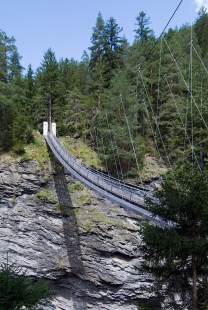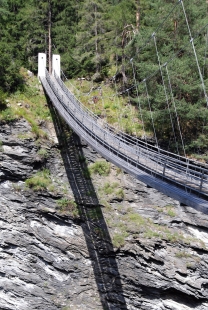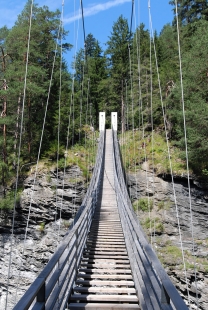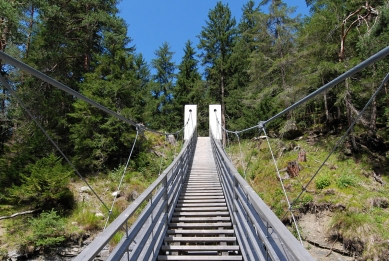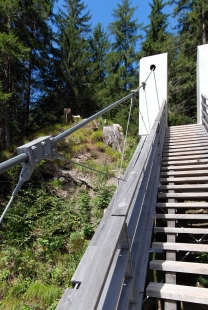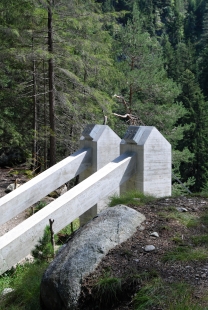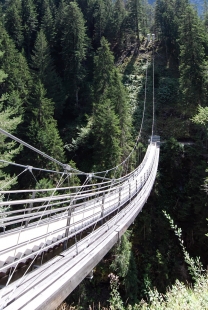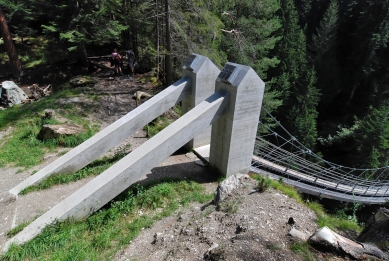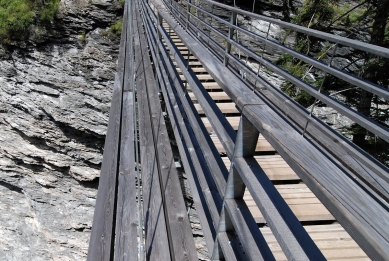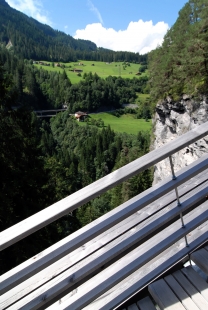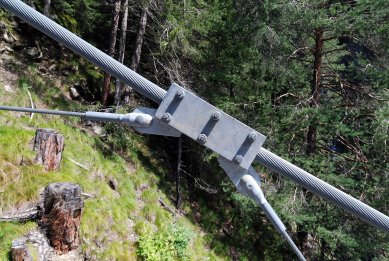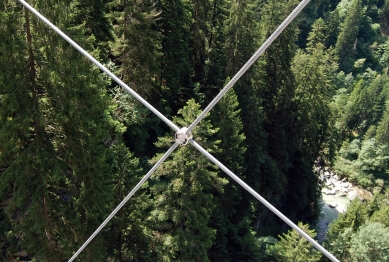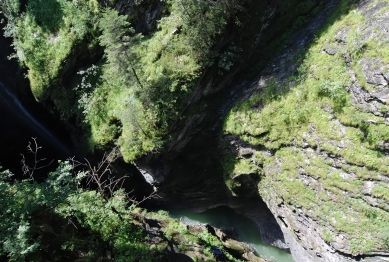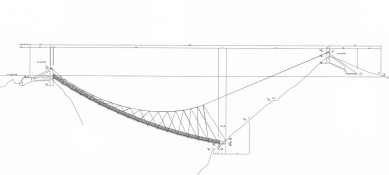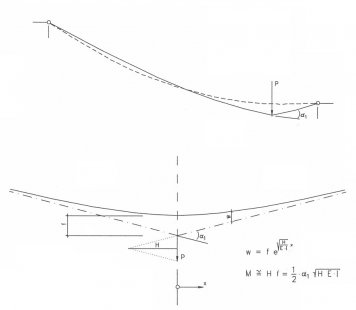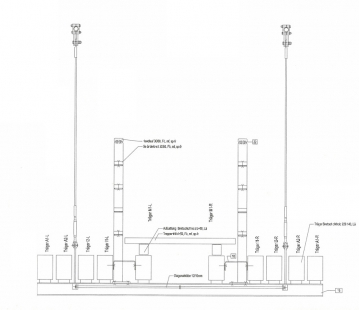
Traversina footbridge II

This bridge also forms part of the Via Spluga long-distance footpath, but belongs to the northern, wooded section of the trail which follows the historic mule track. The bridge replaces an earlierone located further up the valley that was destroyed by rock fall. Today's bridge stands at a spot safe from falling rock, and is much longer and higher than its predecessor. The suspension cables run between the two terrain ribs, which made them easy to anchor, while the inclined stairs form the most direct link between the two flanks of the valley. All this means that construction costs were kept at a level that would attract funding from private sponsors.
The design of the bridge also had to také on board the responses of users, which is why many of its aspects incorporate both a technical function and one that relates to user perception. The structure's sag, for instance, means the walkway can by wedged against the abutment by poststressing the main cable, a feature that increases considerably the stiffness of the bridge and dampens unwanted oscillations; at the time, the sag helps make the steps appear less steep. The timbers placed longitudinally along the sides of the walkway provide a certain amount of resistance against lateral wind forces, and at the same time provide reassurance to hikers by acting as blinkers, in that they screen off the abyss just beyond the railings! Finally, the colossal pylons at each end enable the main cables to be easily tensioned at their anchorage points, but they also act as confidence-boosting gateways that help conceal from hikers what, from a distance, looks like a rather scary structure. Once on the steps, they realise just how safe the bridge is.
The design of the bridge also had to také on board the responses of users, which is why many of its aspects incorporate both a technical function and one that relates to user perception. The structure's sag, for instance, means the walkway can by wedged against the abutment by poststressing the main cable, a feature that increases considerably the stiffness of the bridge and dampens unwanted oscillations; at the time, the sag helps make the steps appear less steep. The timbers placed longitudinally along the sides of the walkway provide a certain amount of resistance against lateral wind forces, and at the same time provide reassurance to hikers by acting as blinkers, in that they screen off the abyss just beyond the railings! Finally, the colossal pylons at each end enable the main cables to be easily tensioned at their anchorage points, but they also act as confidence-boosting gateways that help conceal from hikers what, from a distance, looks like a rather scary structure. Once on the steps, they realise just how safe the bridge is.
0 comments
add comment


